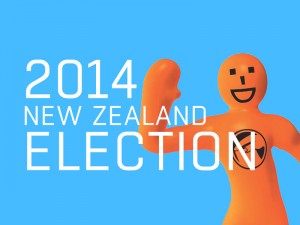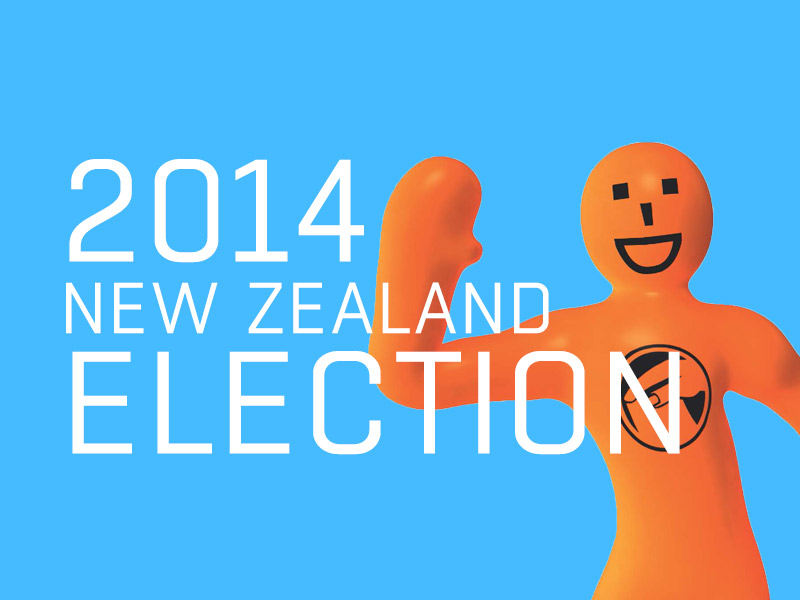By Michael Whitesides
More and more, Americans are deciding to do something else with their time on Election Day. Only 37.8 percent of Americans voted in the 2010 midterm elections; in 2012 only 53.6 percent cast a ballot, and projections for the 2014 midterms put voter turnout somewhere around 33 percent. The United States consistently sports some of the lowest voter turnout in the Western world, and it’s not just because people are busy with work. Recent Gallup polls show that a record 65 percent of Americans say they are dissatisfied with this nation’s system of government, while another states that 60 percent of Americans believe “the Democratic and Republicans parties do a poor job of representing the American people and a third major party is needed.” While it is evident change is needed, the entrenchment of the two-party system may make major reforms difficult. A complete overhaul of the system may be the best option.
A possible solution may exist on an island nation 9,113 miles from Boston. It recently held parliamentary elections in September that yielded a 77.9 percent voter turnout. The nation of New Zealand has implemented a voting system called the “mixed member proportional” (MMP). It’s a combination of the American “winner-take-all” system and the proportional system found in many European nations. It remedies many of the issues we find in the American electoral system today.
To explain how MMP works, we’ll use New Zealand’s system as an example. New Zealand’s Parliament has 121 seats. Seventy-one of those seats are elected the way we elect members of the U.S. House of Representatives. Then, New Zealanders elect the remaining 50 seats by voting for a major political party. If a party receives a certain proportion of total votes (5 percent in New Zealand), it wins seats in the parliament. This makes it easier for parties that exist further from the political center to win seats. So, in New Zealand and other MMP nations, politicians have two ways to win a seat in the legislature. They can go the charismatic American route and try to win the hearts and minds of their home district, or they can spout party rhetoric and win a seat on the back of the party vote.

Proponents of the MMP system say that it provides the best of the two voting worlds. While it retains that folksy, get-to-know-you representative aspect, it also allows for the more European “throw your vote to the party” method. The party vote also allows the parties to better gauge support for national agendas, while keying in the national government as to what the populace finds most important. The party vote also allows for less center-aligned parties to win seats in the legislature, which encourages more political participation and yields a higher voter turnout. New Zealand has seen voter turnout well above 70 percent in its past four elections and even saw an 80 percent turnout in 2005. A more diverse legislature also allows the national government to be a better representation of the true political landscape than simply having two parties would. The current New Zealand legislature is made up of seven different parties whose views range from the environmentalist left to the libertarian right. The MMP system also favors the forming of coalition governments because it rarely leads to outright majorities. That translates to high rates of cooperation among members because parties are forced to compromise and unify just to make a working government.
However, there are still critiques of the MMP system. For example, district representatives’ advocacy of local issues sometimes conflicts with national party agendas, which means they have less incentive to vote along party lines. As a result, party voting blocks tend to be less stable in MMP systems. That conflict between local and national interests can also lead to gridlock, but this gridlock tends to be less severe than the kind we see here in the United States. This is because ruling coalitions can easily strike deals with small parties rather than attempt to win over individual members.
As Election Day draws closer and we decide whether or not to vote, it’s worth giving some thought to alternatives to our current system. The two-party, “winner-take-all” democracy may have been right for the United States in the past, but it is starting to show its age. Maybe it’s time for a system that reflects the true political landscape and encourages broader participation from all parts of the political spectrum.




